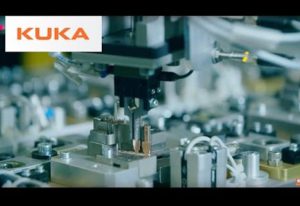What is robotics? Types, Examples. Pictures, Use, Future, Updates….Read
We explain what is robotics, its history, benefits, types and other characteristics. In addition, what are the laws of robotics.
What is robotics?
Robotics is a discipline that deals with the design, operation, manufacture, study and application of automatons or robots . To do this, it combines mechanical engineering, electrical engineering, electronic engineering, biomedical engineering and computer science , as well as other disciplines.
Robotics represents the summit in the trajectory of technological development , that is, the design of tools. Its task is to build a tool that can perform many of the tasks currently performed by the human being, more efficiently and quickly, or in conditions and environments that the human being would be inaccessible.
The robot is, in some way, the most intelligent tool possible. However, the development of such tools, since the years of the beginnings of automation, also translates into unemployment and the replacement of human labor with automatons .
This also fuels an ancestral fear of losing control over these types of tools, or being replaced, dominated or violated by them, warnings that appear even in texts as old as the Golem of the Hebrew tradition, or the Frankenstein monster created by the English novelist Mary Shelley.
Who Invented Industrial Robotics?
The person who created the first industrial robot was George Charles Devol, and for this reason he is noted as the inventor of robotics and the creator of the first robots. Born in Kentucky in 1912, George Devol was an American inventor who was noted for his intelligence from a young age.
Together with Joseph F. Engelberger, Devol created Unimation, a company dedicated entirely to developing the first industrial robots .
George Devol developed the first programmable machine in history in 1948 and was characterized by being easy to use and to adapt to needs. It would be the basis for developing programmable robots that he would later manufacture together with Josefh Engelberger in his robotics company.
Robotics History
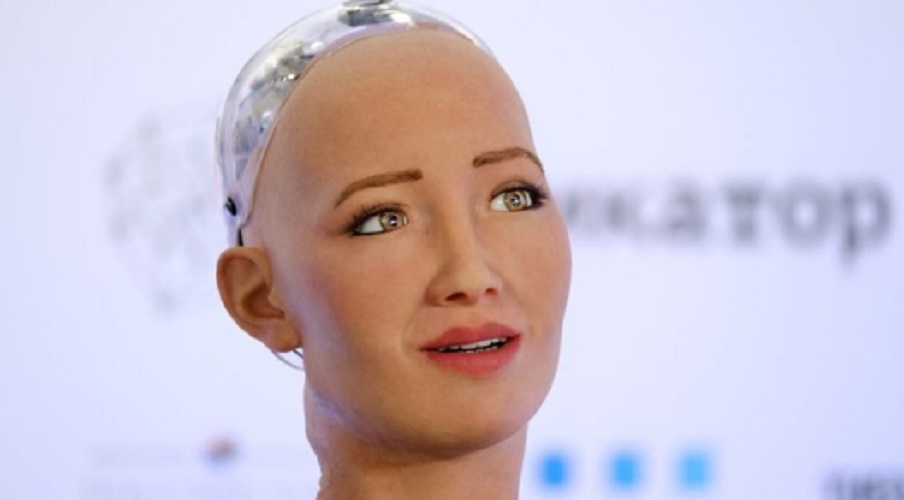
The word robot comes from the Czech word robota , which literally means “slave . ” It was put into circulation by the Czech writer Karel Capek (1890-1938) with his novel RUR (Universal Robots Rossum) of 1920.
Similarly, the word robotics , understood as discipline, was coined by Isaac Asimov (1920-1992). This science fiction writer was one of the most famous cultists of the robotized imaginary future.
However, the history of robotics can be traced much earlier, in the desire of the human being to build beings in his image and likeness, which could relieve him of tedious works.
Already in the third century BC. C. Chinese writer Lie Yukou wrote Lie Zi , a story where a mechanical human figure was presented to a Chinese king. In the Pneumatic and Automata texts of Herón de Alejandría, in the 1st century BC. C., already appeared the ideas of machines and automatons capable of doing what the human being does not.
The first real robots appeared between 1950 and 1960 . They engaged in simple, mechanical and automated industrial work. In 1971 the first robot dedicated to space exploration was used . It was put on the Martian surface by the space project of the former Soviet Union, contact with him was lost only a few seconds after landing.
The Americans imitated this gesture in 1976 with NASA’s Viking I, thus demonstrating the enormous potential of robots in space exploration and other extreme environments, such as the seabed. Robots were even tried to be used to remove the debris from the destroyed reactor in Chernobyl in 1986, but the radiation fried the circuits within a few seconds of use.
The first humanoid and biped robot, ASIMO, was announced in Japan in 2011 , and demonstrations of its ability to interact with humans were made.
Advances in artificial intelligence allowed Sophia to appear in 2015, a ginoid robot with a realistic human appearance, designed to adapt to the social environment with humans and to be able to remember, recognize faces and simulate facial expressions.
Robotics Features
Robotics is the science that studies robots, and as such, it concentrates the different disciplines necessary to design and manufacture them . Thus, it gathers knowledge of different branches of engineering, electronics , physics , computer science , mechanics, animatronics and other similar areas of knowledge.
Its mission, clearly, is to develop the different aspects of a functional robot: its autonomy and its own intelligence, its resistance and operability, its programming and control mechanisms.
In addition, it is a relatively young discipline, whose applications in real life have a huge impact . At the same time it is a source of distrust and fear on the part of society .
Types of robots

Robots are generally classified based on their belonging to the different generations of built robots, which are:
- First generation . Multifunctional robots with a simple control system, manual, fixed sequence or variable sequence.
- Second generation . Learning robots, which repeat sequences of movements previously executed by human operators.
- Third generation . Sensorized control robots, controlled by some type of program (software) that sends the signals to the robotic body to carry out certain mechanical tasks.
Another form of classification responds to the structure of theft t, being able to talk about robots:
- Polyarticulated . They have many moving parts.
- Phones . They are rolling or automotive.
- Zoomorphic . Imitate the shape of some animals.
- Anthropomorphized . Imitate the shape of the human being.
Robotics benefits

Some benefits of robotics are:
- Increased productivity , in factories and other mechanical spaces, since robots can do tasks more times, faster and more efficiently than human workers .
- Access to hostile environments , such as outer space, the seabed, spaces devoid of air , etc., in which a human worker could not operate or would do so at very high costs and risks .
- Automation of unwanted tasks , generally those related to maintenance or cleaning, which are mechanical and repetitive. Smart vacuum cleaners ( roomba ) are a good example of this.
- Help in medicine , allowing remote operations, controlled by specialized medical software , with a very high precision index, through arms and other robotic tools.
- War applications , to manufacture automated bombers, unmanned tanks, and other new forms of technological weaponry. If this is really a benefit, it is a matter of debate.
Robotic engineering
If robotics is the science that designs, plans and conceives of robots, robotic engineering is, instead, its formal incorporation into the domains of engineering.
It is responsible for the design of automated tools that facilitate human life, or that take steps towards the eventual construction of a true robot, such as those predicted by science fiction. It is a high-demand university career in today’s post-industrial world.
Robotics Laws
In his fictional work, the American writer Isaac Asimov conceived the Three Laws of Robotics , which are a fundamental code of operability incorporated into the nucleus of the positronic brains of the robots in his stories. The three laws were, in order of hierarchy and importance:
- First Law . No robot will harm a human being or allow inaction for a human being to suffer damage.
- Second Law . Every robot must obey orders issued by a human being, except in cases where such orders contradict the First Law.
- Third Law . Every robot must ensure the preservation of its existence, except in cases where this contradicts the provisions of the First and / or Second Law.
Subsequently, in his novel Robots and Empire (1985), Asimov adds a “Zero Law” with absolute priority over the other three, which read “A robot will not harm humanity or allow inaction for humanity to suffer damage.”
Asimov’s stories were about robotic dilemmas when it came to complying with these three laws. He explained the exceptions, contradictions and problems arising from his code of conduct.
Characteristics of intelligent robots
We can also classify robots by their characteristics and their technical capabilities. And we are not only talking about their ability to move, but because of the type of programming and level of intelligence they possess. Here we must differentiate them from chatbots, since a talking bot is a virtual robot that is in a software .
The development of Artificial Intelligence Neural Network Algorithms is revolutionizing the world of robotics, through large-scale data processing. This has provided endless possibilities in the evolution of robotics. It is enough to remember the names of humanoid robots such as Sophia, Thespian and Ibuki that stand out for their capacity for interaction and the level of intelligence they possess.
One of the biggest efforts in robotics is focused on researching how to improve the interaction between people and androids. We see how private companies and universities, such as the UPV / EHU, for example, seek that the movements of robots increasingly resemble those of humans.
Advantages and disadvantages of robotics
The latest advances in robotic engineering have made it possible to implement them in any workplace. They are especially interesting for lowering production costs, but they also allow them to be used in places of risk or that generate muscle overloads for operators, which reduces sick leave and accidents.
Another characteristic of robots is that they work with a precision that is not altered by fatigue, sleep, work shifts or illnesses, but it is also that they do not need vacations or “for the moment” taxes must be paid for them.
While it is true that industrial robots can work 24/7, just like an operator, robots need preventive and palliative maintenance.
The biggest drawback of the implantation of robotic devices in the workplace is that it will continue to cause massive job destruction over the next decade, mainly in the industrial and service sectors. It is undoubtedly a difficult reality to hide, although it is just as evident that millions of new jobs will be generated around robotics.
What is robotics for and where is a robot used ?
The progress of robotics is unstoppable , allowing it to be used in virtually every workplace, from industrial, service and surgical to aerospace among many others. By offering a wide range of solutions, each of these areas requires its corresponding robotic features. It is enough to remember that the technology of an intelligent butler is different from that of combat robot design.
If you want to know what robotics is for and how research robots work , below we list and later detail some of the sectors in which robots are gaining more prominence:
What is automation and industrial robotics?
Industrial robotics refers to robots intended for the automation of manufacturing processes within the industrial sector . These robotic devices have been in place on assembly lines for more than four decades. However, it has been in recent years that they have experienced a great advance in their benefits. It has been thanks to the innovations that have been produced in parallel technologies and at the same time associated with robotics, such as Artificial Intelligence and Artificial Vision.
They are designed to carry out jobs of all kinds of complexity and are especially attractive when it comes to performing repetitive and strenuous activities, as well as tasks that are dangerous for humans. All the work they do is done without feeling resentful due to lack of sleep, illness or fatigue.
One of their peculiarities is that they have multiple arms and axes on which they can rotate, which allows them to be very versatile. They are capable of welding, assembling, assembling, adjusting, placing parts, making three-dimensional maps of parts, radiographing welds, transporting and stacking material, and so on up to a host of functionalities.
At the beginning of the century, Japan was the country that had the most industrial robots installed. However, in 2019, China is the country that leads this ranking, with a total of 148,000 industrial robots installed in 2018 . These are astonishing figures given by the Chinese Institute of Electronics, which represent 38% of the robots installed in the world.
If the global economy does not stagnate as a result of the current trade war between the United States and China, the International Federation of Robotics predicts that, by 2021, there will be 130 robots per 100,000 inhabitants in China .
There are mainly two types of industrial robots:
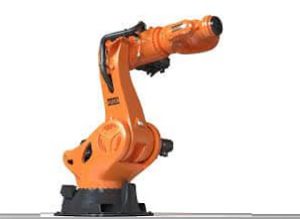
Photo: Kuka Robot

Photo: Robot from Universal Robots
Non-collaborative Industrial Robots
Industrial robots are characterized by their large dimensions, their strength and their robustness. We usually find them on assembly lines in the automotive sector or in warehouses, and one of their main characteristics is that they are not prepared to work in the workplace with humans . As a security measure, they work in fenced environments, and in the presence of humans, the assembly line incorporates mechanisms with which it stops automatically.
There are many companies that design and market this type of robots worldwide, some of the most prestigious being Kuka, Yaskawa and Kawasaki.
Collaborative robots or Cobots
The Cobots name comes from the word play “collaborative robots . ” It refers to small industrial robots that have been designed with the aim of being able to work in a factory within an environment surrounded by humans.
To achieve full security, these devices have sensors installed that detect our presence in a 360º field. Furthermore, R&D has made it possible to design claws that have limited pressure that they can exert to avoid the risk of entrapment.
One of the great challenges in the industry is to ensure that these robotic devices are capable of fully coexisting in the workplace together with humans . The development of this technology has made it possible to achieve this in the last decade, with many companies offering this type of solution.
The companies that install robots and that in turn are the most important Cobots manufacturers worldwide are:
- ABB
- Universal Robots
- Yaskawa
- Kuka
- Fanuc
- Omron
Features of collaborative robots
Collaborative robots are characterized by having smaller dimensions than industrial robots. They stand out for their versatility, for their low cost and for how easy they are to program.
Virtually all industrial robot software has built-in programming with 3D interfaces, so that programming a set of movements is a quick, simple and intuitive task for a professional .
Some of the most relevant collaborative robot manufacturers worldwide are the all-powerful Universal Robots, the German company ABB, creator of Yumi and Kawada Robotics, which is the company that designed the excellent robot called Nextage.
Social robots are very useful to combat loneliness of people, offering a company 24 hours a day .
DEFINITION OF WHAT SERVICE ROBOTICS IS
By definition, professional service robots belong to a branch or category designed by robotic engineering that are used to aid and facilitate the lives of human beings. Its objective is to carry out autonomously or teleoperated various tasks, whether heavy, repetitive, in dirty, dangerous or stressful environments that can prevent injuries and illnesses.
The International Federation of Robotics (IFR) defines service robots as “ a robot or equipment that performs useful tasks for people or equipment, excluding industrial automation applications ” .
Features of service robotics
It is characterized by having a degree of partial or total autonomy. This is due to intelligent systems that have been integrated and that with the development of Artificial Intelligence and Artificial Vision , are offering solutions with great impact on the labor market. They are robots that perform complete teleoperations
It is undoubtedly the most widespread robotics in the world, since it encompasses and encompasses endless possibilities and applications for use in the company that knows no limits. These characteristics allow great business opportunities with growth prospects to continue developing SMEs.
Some examples that are no longer science fiction or futuristic are robots that perform the following functions:
- Messaging and transportation of materials
- Hostelry
- Social
- Military and security
- Medicine or medical
- Housework at home: kitchen, cleaning and home automation
Courier and transport robots
The proliferation of messenger robots responds to the need to solve the existing deficiencies in the messaging and transport sector. It seeks to lower costs and find the efficiency of sending packages that have skyrocketed as a result of online sales, mainly led by companies and stores as famous as Amazon and Alibaba.
Next we are going to make a list with the names and some examples of service robots for messaging.
Examples of service robots
Robot Digit
The Digit robot is a prototype of a robotic messenger designed by the Ford company together with Agility Records that aims to make autonomous deliveries to your home by 2020.

Cassie Robot
Cassi is a brother robot of the Digit robot that is used in different robotics laboratories to teach the robots that are currently being designed to walk.
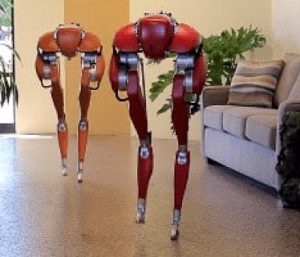
Special mention for the land mobile robots that deliver food at home and that in the last 5 years are having a great development
Kiwibot Robot
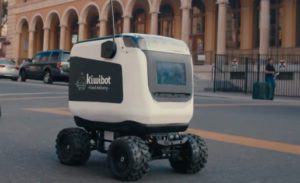
Kiwibot is a fully autonomous robotic solution that is currently being used successfully on the West Coast of the United States.
Robot Startship

Starship is another food delivery robot that is operating successfully in universities in the United States. One of the companies that has bought these devices is Sodexo, a food chain
Social robots are intended to make everyday tasks easier for humans , whether at home or in a work environment. They are characterized by being collaborative robots, which is why they are perfectly designed to function independently inside a home or building.
Another of its peculiarities is that some of these devices can be used as educational robots, as well as to communicate and interact with elderly people . It helps this group of people to remember when to take medication, bring food and drink closer to them, or accompany them when performing physical or memory exercises.
Social robots are expressly indicated to help the development and mobility of dependent people , as well as those with special difficulties.
However, the functionality of these robots is very varied, so they are also prepared to function in work environments, as well as to perform tasks of effort or complexity.
There are many types of social robots, so they vary in their functionality, physiognomy, intelligence level, type of motor skills, benefits, etc … Due to the difficulty involved, we are going to try to classify them as follows:
- Humanoid robots
- Zoomorphic robots
- Kitchen robots, cleaning robots and butler robots
Currently, humanoid robots are capable of debating in social gatherings or presenting informative newscasts
Humanoid robots
Humanoid robots are robots that have a human form and constitution focused on seeking hyper-realism. We could divide them into two groups, the first being made up of those that look like an android but have a head, trunk and limbs. This would be the case of the robot Romeo or Pepper.
In the other group are humanoid robots that have a human figure and appearance, that is, they resemble each other visually and physically, in addition to gesturing and speaking in the same way that humans do. These are characterized by having a high level of intelligence and interaction with people, endowed by a holistic cognitive personality . In this group is where we place the robot Sophia and Ibuki.
There is a possibility that they are bipedal or not, and that is that many of them move on a structure driven by wheels.
What is the future of humanoid robots?
We could firmly affirm that what we have seen so far in robots like Sophia or Ibuki is just the tip of the iceberg. Technology continues to advance and humanoid robots will benefit from it. Everything indicates that thanks to hyperrealism, robots will end up inserting themselves into our lives until the moment comes when we see them with us with total naturalness .
Hans Robotics, the Hong Kong company that created the world’s most advanced humanoid robots, has patented a material called Frubber with which it tries to reproduce human skin. With this material, composed using nanotechnology that reproduces the muscles of the face, it recreates Sophia’s skin, producing a sensation of hyperrealism.
One of the aspects in which advanced robotics companies are striving the most is to ensure that robots have empathy and emotions, and ultimately that they are capable of transmitting feelings . Until now it was a unique feature of humans, but sooner rather than later, we will end up seeing it in these robots.
Why is there a boom in world robotics?
In the last decade there has been an amazing technological advance in these devices as a result of the development of data learning through Deep Learning. The R&D in Artificial Intelligence has marked a turning point in robotics , and as a consequence, we hear daily news of how humanoid robots are capable of presenting live newscasts or even giving lectures.
Currently there are dozens of robots that robotics companies have designed with different characteristics and capabilities. Some of these models are very basic, and are usually used as gifts with the aim of entertaining children and enjoying the experience of having their first robot.
However, those that concern us in this article are those that have the latest technology, and that is why we are going to focus on the latter.
List and characteristics of the best humanoid robots of 2019
Below we are going to list various models of robots in the shape of a humanoid android and other famous robots in the shape of real characters. The vast majority have been created in Japan, China, the United States and Europe.
Humanoid robot Sophia
Talking about humanoid robots inevitably requires mentioning the robot woman Sophia . It was introduced to the world by Hanson Robotics in 2015, and has since become a global icon. With a very careful woman’s appearance, she has a practically human voice.
It incorporates state-of-the-art technology that allows you to participate in social gatherings, conferences and even advertisements . From Sophia we can highlight her amazing ability to learn and to relate to humans, but there are other aspects to highlight, such as her more than successful facial expressions that she makes when speaking.

Humanoid robot Ibuki
Ibuki is a humanoid robot that has attracted the attention of the public due to its high degree of sophistication.
It is 120 cm tall and weighs around 37 kg. It is created by the prestigious Japanese engineer Hiroshi Ishiguro and its design is inspired by the aesthetics of a 10-year-old boy.
The goal of Ibuki is to communicate with people who need help, hence its nice aesthetic.

Humanoid robot Pepper
Pepper is a humanoid robot who has triumphed internationally on his own merits. It is 120 cm high and moves autonomously by means of wheels that it has built into its base.

Its features make it a great collaborative and programmable robot, capable of conversing with people, dancing and even informing the public at events. For all this, Pepper has become a claim for many companies.
Humanoid robot Romeo
Romeo is a state-of-the-art bipedal robot designed by Aldebaran robotics and SoftBank Robotics Europe.
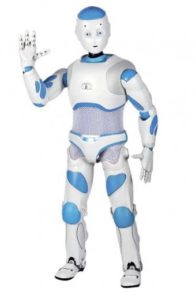
At present, he has not yet acquired full autonomy of movement, but despite this, it is astonishing to see the degree of sophistication with which he moves the parts of his body , including the phalanges of his hands.
Asimo humanoid robot
Asimo is one of the most important bipedal humanoid robots that has been designed to date. It was created by the Japanese company Honda Robotics and introduced to the world two decades ago.

Asimo’s subsequent evolutions made him stand out for his agility, his synchronized movements and for being totally autonomous , both when speaking and moving, as well as being able to improvise depending on his surroundings.
Talos , the Spanish robot
Talos is a robot designed by the Barcelona robotics company Pal robotics. It is a collaborative humanoid robot, capable of moving autonomously between people.
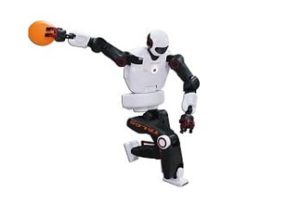
He is 175 cm tall and has a weight of 95 kg. Among its main characteristics we find that it is capable of lifting 6 kg in each hand and walking at a speed of 3 km / h. Without a doubt it is a perfect solution to carry out industrial tasks .
Humanoid robot Nao
Nao is a high-performance bipedal humanoid robot . It was designed in 2008 by Aliverobots and stands 58cm tall and weighs 4.3kg.

It is fully programmable and its ability to interact with people has made Nao one of the most attractive robots on the market . Another of his virtues is the degree of motor skills he has, which allows him to even play soccer games.
Harmony sex robots
We also have to remember sex robots, which are next-generation robots designed for romantic and sexual relationships. Among them we have to highlight the humanoid robot Harmony, which stands out for the careful appearance of its physiognomy.
Kitchen robots, cleaning robots and butler robots
This heterogeneous set of robots is characterized because its main purpose is to make life more comfortable, mainly at home. As there are a large number of devices on the market, we had to divide them into three groups to simplify the article:
- Kitchen Robots
- Cleaning robots
- Butler robots
Below we briefly mention the most representative models:

- Lidl food processor
- TermoMix food processor
- Moulinex food processor
- Cecotec kitchen robot
- Mambo food processor
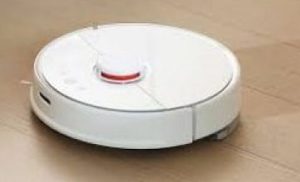
- Xiaomi Vacuum Robot Vacuum
- Rumba robot vacuum
- Conga robot vacuum
- Rowenta robot vacuum
- Carrefour robot vacuum

- Robot Carl
- Robot Buddy
- Jibo Robot
- Cimon Robot
The advance that has taken place in the neural networks of Artificial Intelligence offers us the possibility of being able to talk calmly with robots anywhere, as we can see in the following video astronaut Alexander Gerst with the robot Cimon.
On the other hand we have the robots that act as butlers of the house, as is the case of the Carl robot, which is in charge of the automated functions and of monitoring it while the owners are absent from the house.
Robotics in medicine
The applications of robotics and Artificial Intelligence to medicine have caused a turning point, allowing the development of new projects in fields of work that were practically stagnant. Proof of this is that daily news of innovative projects that have been developed using robotics and Artificial Intelligence emerge. This is the case of the Xenobots, the living robots or Biobots recently discovered in the United States with frog cells . Some of the areas that benefit most are internal explorations, offering more accurate diagnoses and allowing less aggressive surgeries that facilitate faster recoveries for patients.
Bionic prosthetics and robotic hands
In the field of prosthetics, a great advance has been made by allowing the functionality of amputated limbs to be replaced by robotic hands or arms. We have numerous models at our fingertips, although at the moment the one that stands out the most for its performance is the Luke Arm, a state-of-the-art robotic arm that allows you to touch your fingers . By means of pressure sensors, it sends impulses to the brain with which to identify whether an object is soft, its weight or the pressure you exert on it.
Exoskeletons
Very significant are the projects based on robotics applied to patients with spinal cord injuries and their corresponding rehabilitation. To do this, they work with the so-called exoskeletons, which allow bodies that had been paralyzed, to recover with their help part of the lost mobility.
In the same way, progress is being made in the field of exploration, designing highly complex projects using nanorobotics.
what is robotics surgery in medicine
In the surgical field, projects such as the Da Vinci robot are allowing laparoscopic radical prostatectomy and endocavitary surgery to be performed with great precision, improving the success rate of interventions in patients as well as reducing recovery times.
This technique, sooner rather than later, and with the help of the 5G network , will allow a specialist surgeon to intervene on a patient from a thousand kilometers away .
Space robotics
Space robotics refers to the explorer robots sent on space missions and whose main objective is to carry out scientific and reconnaissance tasks. To carry them out, the robots are adapted to the environmental conditions and the environment in which they have to operate.
The space robotics industry is in the midst of a hectic expansion process. According to a report published by the Global Space Economy, 2.88 trillion dollars were invested in 2018, while it is estimated that by 2023 the investment in space robotics will be 4.36 million dollars . This is largely due to the fact that the space agencies of the most developed countries want to accelerate the arrival of man on Mars for strategic reasons.
In addition to being able to perform functions where humans cannot work, it will also replace us in extreme or risky situations.
Its main function is to collect and analyze evidence, this data being sent to research centers on Earth.
Robots have been working on Mars for more than two decades . In 1997 the robot Sojourner, which belonged to the Pathfinder mission, was sent to Mars. Later other robotic devices were sent, among which Spirit and Opportunity stand out. The latter became active on the red planet for 15 years. During that period of time, he traveled more than 45 km and managed to find evidence that there was water on Mars in the past.
At present the Curiosity robot is in operation on Mars , which is active thanks to a small built-in nuclear reactor. In 2020 NASA will send the MARS 2020 mission to the red planet, which if we wish, we can accompany by sending our name to space
Space rover robots
Space rovers like Curiosity are research and reconnaissance robots that primarily conduct science missions. Goodbye to the astronauts and welcome to the Age of future robots in space.
Fedor, the Humanoid Space Robot
Fedor, also known as the SkyBot F-850, is a next-generation humanoid robot originally conceived for exploration and rescue missions in natural disasters.
AI-controlled software has allowed him to acquire knowledge in various areas, being able to drive vehicles autonomously or shoot with both hands with great precision.
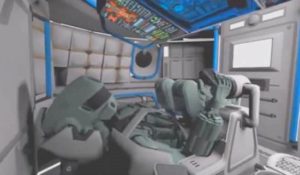
In August 2019, he was sent on the Soyuz MS-14 spacecraft to the International Space Station, where he remained for 11 days until he returned to Earth on September 7.
R5 Valkyrie, a robot from the future
The R5 Valkyrie robot is a humanoid robot designed by NASA for use in space missions. Without a doubt, it is his big bet, and he will be part of the robots of the future that will be in charge of carrying out scientific projects on other planets.
Another space robotics project is Rosalind Franklin that belongs to the ExoMars mission, which has been developed between the European Space Agency and Russia. It is estimated that it will be put into orbit bound for Mars in 2021.
Technology companies have an economic power that allows them to be at the forefront not only of the latest technologies, but also to face new challenges, including the aerospace career. Amazon and Tesla have already announced that they were carrying out their own space robot projects with the intention of returning to the Moon by 2024.
Another space robot that has been used successfully on the Moon was the Yutu 2 Rover, sent by China in early 2019 as part of its CLEP Lunar Exploration Program.
Definition of what is Agricultural Robotics
We could define agricultural robotics as the set of robotic devices that are designed to automate jobs in the agriculture sector.
The agricultural sector seeks to evolve through robotics , obtaining 4.0 solutions to make its production model more efficient while making it more sustainable.
Are agricultural robots necessary?
Its main objective is to increase productivity while reducing costs . It should be remembered that as a consequence of the unstoppable increase in population worldwide, at Expo Milano 2015 it was agreed that it was necessary to increase food production between 60 and 70% before 2050.
In the last decade, the increase in projects for the development of agricultural robots has been exponential. It is a consequence of the innovations that other technologies have suffered, such as Artificial Vision and Artificial Intelligence, mainly the development of Neural Networks in the so-called Deep Learning.
The sum of all these circumstances has favored the search for other alternatives in robotics 4.0 with which to solve the problems of crops.
Types of robots and what jobs agricultural robots do
There are two types of agricultural robots, aerial and terrestrial, and due to lack of space in this article we are going to focus on the latter.
Robotic devices used in the field, whether indoor or outdoor, are called terrestrial robots. They are identified by the acronym UGV, for Autonomous Land Vehicles.
Examples of agricultural land robot models
We present to you Agrobot, a robot designed by a Huelva company called Agricultural Robotic Solutions. The creation of this robot has been very successful in the US and Chinese markets , as they are the two largest strawberry growing powers in the world.
Agrobot is a completely autonomous robot. Thanks to Artificial Intelligence, it is able to identify and select strawberries that are ripe enough to be harvested. It has 24 robotic arms with which it cuts the strawberry and places it in a box.
Here we show you Robotic Plus, created by a New Zealand company. This autonomous robotic device is capable of collecting only Kiwis for 24 hours a day.
The next model that we show you is Abundant Robotics , an autonomous robot that collects apples that are in an optimal state of ripeness.
Now we bring you closer to Blue River Technology., A company that has been able to create a machine with software with AI and Artificial Vision capable of recognizing the type of plant in the field. Its objective is to identify bad herbs, select the ideal herbicide and the amount required to eliminate it.
Robots to control the vines
Vinerobot is a European project in which the University of La Rioja and Valencia have participated. It is an autonomous robot that, thanks to Artificial Vision, is capable of controlling the state of the vineyards, in addition to selecting the grapes that are in perfect condition.
Vinerobot analyzes the nitrogen percentage at the foliar level, which is essential to know when is the exact moment to carry out the harvest
A Catalan company has designed Vinbot, which is an innovative solution for the wine sector . It is a small autonomous robot with off-road performance that incorporates innovative features. Its main purpose is to control the performance of the vineyards. It incorporates sensors and cameras that capture images , and through a 3D interface, it analyzes the behavior of the vineyard.
Now we introduce you to HA-100, the agricultural robot from Harvest Automation. It is an autonomous collaborative robot (AIV) capable of teamwork . Its purpose is to move material, mainly pots or pots, autonomously, and it does so both indoors and outdoors.
RIPPA is a robot created in Australia. It is capable of detecting foreign objects in the crops, as well as controlling pests, the moment in which the plantations must be fertilized or of estimating the state of the harvest.
Fitorobot, an ancient robot that made history in greenhouses
To conclude, we make a mention of Fitorobot. It is one of the first autonomous robots designed by Spanish engineering, specifically by the company Cadia. It is a robot created to work inside greenhouses.
Fitorobot is characterized by being a multipurpose robot, capable of spraying pesticides or transporting products from one place to another without having to be aware of the amount of pesticides in the environment. It was designed at the beginning of the s. XXI, and was a pioneer in automating greenhouses using agricultural robots.
What impact does the use of robots 4.0 have in agriculture?
The rise of robots for agriculture and livestock is so important that, according to the International Federation of Robots (IFR), they are the second best-selling robots worldwide , after those for security and defense.
In the last two years, the number of mechanical robot projects and patents that have been registered directly oriented to the agricultural sector have multiplied by five.
Advantages and disadvantages of agricultural robotics today
The advantages offered by these devices are countless, but we could highlight among their greatest virtues, the capacity they have to reduce production costs while optimizing and increasing the size of the harvests.
Precision agriculture favors a reduction in harvest time, as well as the environmental impact, the consumption of water, fertilizer and phytosanitary resources . A less visible but real advantage is that the use of robotic devices reduces food safety problems.
The great virtues of agricultural robots show what their two main disadvantages are
- Large Investments . Without a doubt, the high amount of investments that must be made must be emphasized, and until prices are democratized, for the moment they will be prohibitive for small companies .
- Massive job destruction . In Spain there are 800,000 people working in the agricultural sector, and although some manpower will always be necessary, a large percentage of this group will be involved in massive job destruction . This event will occur in the medium term, mainly in medium and large companies, while the small will be unable to survive because it cannot be competitive in production costs.
Definition and what is Educational Robotics
Educational robotics is a multidisciplinary method of learning with a pedagogical nature with which students design and build robots. The objective of this didactic discipline is to introduce children to technology while enhancing their skills and developing concepts . While they assemble and learn to program the machines, they strengthen specific areas of knowledge, such as creativity, fostering teamwork, leadership, problem solving, competitive and entrepreneurial spirit.
Many students get into robotics because they wonder how to make and create a remote control sumo robot , a homemade robotic arm, or simply because they are curious about what materials robots are made of and what their architecture and parts look like. Do not forget that behind robots there is research that provides skills to young people.

The main objective of robotics projects is that they have fun, but also that it is a challenge for students to finish the design of a prototype, test it and present it in front of teachers, parents and classmates.
STEAM Methodology in Educational Robotics
The teaching method used in the classrooms is based on the STEAM methodology. It seeks to develop children’s skills through the experience acquired by carrying out real projects with programmable robots. It is part of the so-called “ Constructionist Learning ”, also called “ Learning by doing ” by John Dewey, which seeks to provide children with tools so that they can participate and become involved in teaching .
Studying educational robotics is also beneficial for preschool children, although the benefits are seen with greater visibility among students in Primary and Secondary Education.
The most advisable thing is to learn in class under a didactic method, in an environment organized by a teacher and forming a work team with colleagues . However, it is also possible to do it individually. Via online you can find a large number of books, tutorials and manuals in pdf, as well as videos on YouTube that promote learning outside of teaching.
If you’ve ever wondered how a robot works and what it looks like , or just how to make an easy and simple robot for kids that moves, the following information about programmable robot kits will interest you.
What is the best assembly robot kit and software for educational robotics?
There are kits to build homemade robots specifically designed for children who want learning to be enjoyable, fun and rewarding . In this process of training and developing prototypes of robots they will become familiar with all kinds of electronic and mechanical components and assembly parts.
One tip to keep in mind is that when we start building robotic devices, if possible, we must look for simple alternatives that will help them learn how to make a robot . In more complex projects, the investments are higher as they require to be automated and monitored, which means that the price of the components is no longer economical.
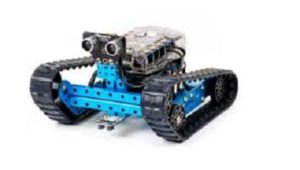
The most common assembly kits are Lego Robotixs brand robots, although there are other equally valid manufacturers that offer similar alternatives, such as DJI, Parallax, MakeBlock, Fischertechnik, BQ, Clementoni and Fischer Price.
The best sellers are those of Lego Education , with their different ranges depending on the desired difficulty, such as Lego Wedo 2.0 and Lego MindStorms. Another widely used possibility is the MakeBlock brand robots, with the mBot series, although if you want to go further you can try high-performance machines such as RoboMaster S1 that allow you to compete and launch projectiles.
The programming language softwares for children are very varied and stand out for being simple and intuitive. Currently the most used to take the first steps are Arduino and Scratch 3.0, although of course there are many more, such as Picaxe or Python among others.
Types of educational robots for children
Next, we prepare a brief summary of the best-selling robots on the market, among which robotic animals stand out for generating great interest. Do not forget that for the experience to be rewarding and to awaken the interest of the little ones, you must buy a robot according to their age and knowledge.
Early Childhood Education

- Codi-Caterpillar Robot
- Robot Dash
- Robot Doc
- Robot Next
- Robot Mouse
Primary education

- Zowi Robot
- Lego Wedo 2.0 series robots
- MakeBlock mBot, Cosmos, Starter and Ranger Robot
- Tobbie Robot
- Kibo Robot
Secondary education
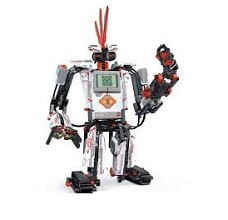
- MakeBlock Dragon Knight Robot and Ultimate Robot
- Lego Mindstorms EV3 and NEXT 2.0 robot
- Robot Fischertechnik Robot TX and TXT Smart Home
- RoboMaster S1 Robot
Educational robots are booming and it is due to the offer of educational projects that institutions have developed. We can find them as subjects in primary or secondary education centers and institutes, in the same way as in workshops for extracurricular activities or academies.
As a result of this incipient passion for robots, tournaments and competitions arise throughout the planet, with world championships that bring together the best robotics projects from each country.
Why study Robotics Engineering?
One of the virtues of studying robotic engineering is that it is one of the professions with the most outlets on the job market, both in the present and in the medium and long-term future. It is frustrating to finish a cart and ask yourself, what good is knowledge if you don’t give me a job opportunity? Well, this is not the case with robotics.
Keep in mind that currently there are hardly any qualified professionals in Robotics Engineering . As the European Union stated with concern, by 2020 we will find ourselves short of people to meet the needs of the labor market in the Age of Robots .
It is a career of great interest that encompasses different sciences, and that also allows you to acquire an enriching component such as mastering new technologies. In order to offer a prosperous future to our minors, public bodies strive to implement the subject, career or master’s degree in robotics in numerous centers and universities, even online so that it can be adapted to your needs.
Featured Breaking News in Robotics
They discover xenobots, which are living robots or biobots made from living frog cells
A scientific team from the United States has discovered xenorobots, robots made of living matter from frog cells.
Las Vegas CES 2020 Kicks Off Introducing Tech News and Innovations
Last Tuesday, January 7, CES 2020 began, the world’s largest technological event. It takes place in the city of Las Vegas, in the southern United States. Until January 10, we will have the opportunity to see the latest advances in service and consumer technology, with the most important companies in the sector at the fore.
A British robotics company offers 115,000 euros to copy your face in robots
Geomiq, a company based in England, has offered 130,000 pounds, that is, 115,000 euros, to transfer the image rights of your face to the robots they are going to manufacture.
MEGABOTS SELLS AN EBAY AUCTION TO ITS COMBAT ROBOT EAGLE PRIME BANKRUPTCY
The famous American company Megabots that became famous for creating giant combat robots, and that in 2017 they faced the Japanese robot Kuratas, does not have money to pay their loans with the banks. To avoid bankruptcy, it has decided to put Eagle Prime, one of its most important robots, up for sale on eBay.
ROBOTS DESTROY 400,000 JOBS IN EUROPE SINCE 2000
The data on unemployment generated by the introduction of industrial robots are overwhelming, and according to a recent report, in the next decade they will multiply by five, reaching the figure of 2 million directly unemployed.
Russia sends Fedor, the first armed humanoid robot in space, to the International Space Station.
The space race has no limits, and Russia intends to go one step further in leading it by sending a military super robot called Fedor, also known as SkyBot F850, which is capable of shooting with great precision with both hands. Your mission is to reach the International Space Station from the Soyouz rocket.
